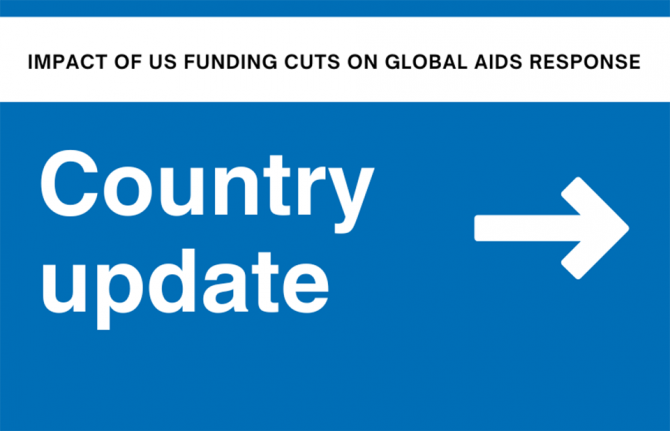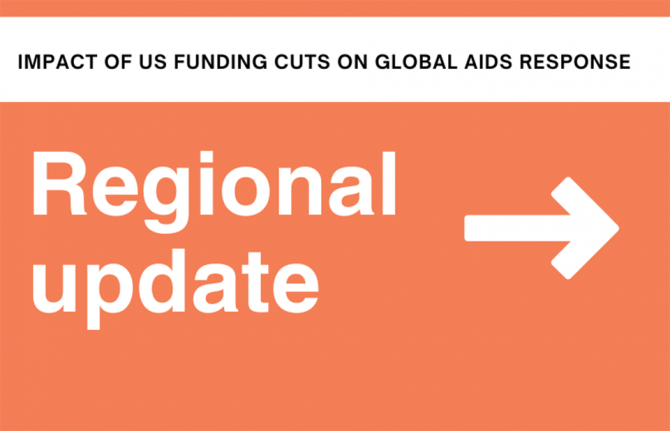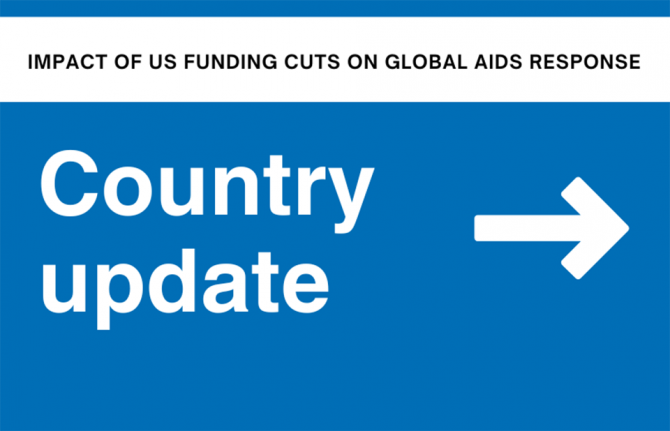
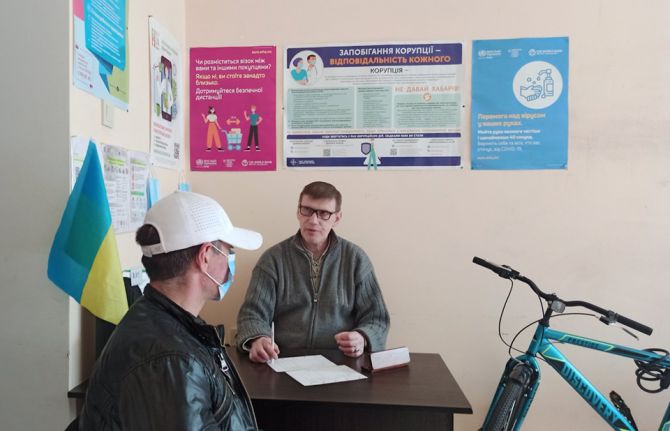
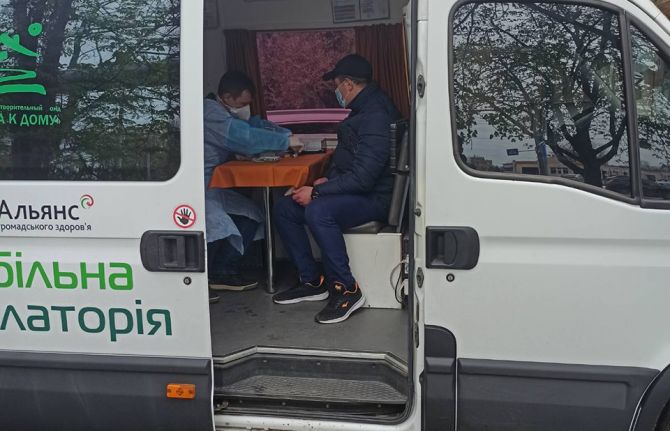
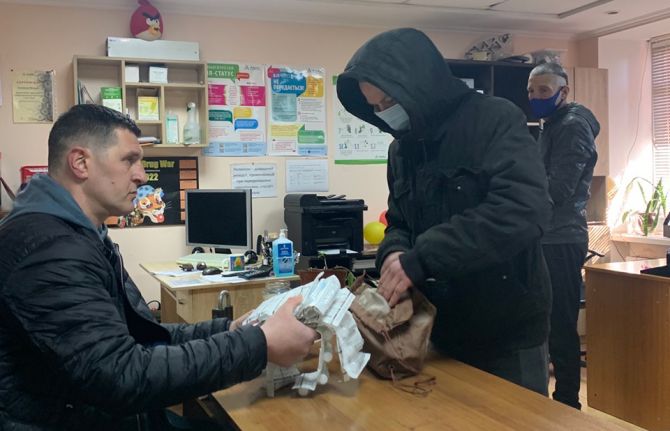
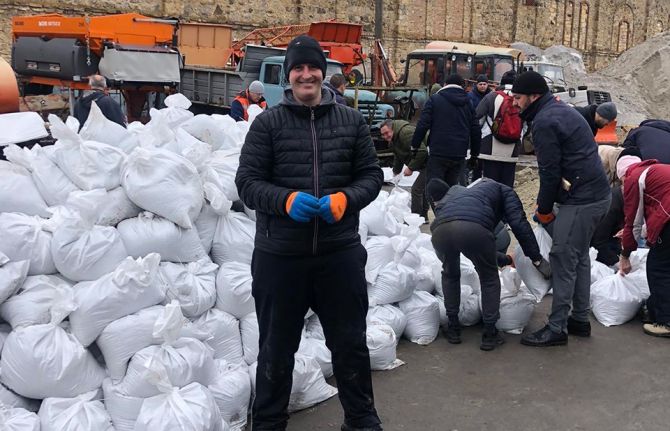
Feature Story
Sustaining HIV services for people who use drugs in Odesa
22 April 2022
22 April 2022 22 April 2022Odesa is a major Black Sea port, with a substantial drug use. In the 1990s, Odesa saw the outbreak of HIV infection in Ukraine. But more recently it has successfully developed one of the world’s most effective systems of harm reduction services for people who use drugs. The system is funded by the state and local budgets and implemented jointly with non-governmental and community organizations. Odesa was one of the first cities in Eastern Europe and Central Asia that signed the Paris Declaration. Last year, it reported a reduction of new HIV cases among people who use drugs.
Natalia Kitsenko is head of the public health department of the Road to Home Foundation, one of Odesa’s oldest organizations providing services to people who use drugs. UNAIDS spoke with her about how her organization has been managing to continue to help people in need, even during this war.
Question: Did many people flee Odesa?
Answer: Yes, many left, mostly women and children. The people in our organisation are an exception. Of 60 employees, 4 people left because they have small children. The rest stayed and we are actively continuing our usual work and also providing emergency assistance to women with children and elderly people fleeing from other cities—Mykolaiv, Kherson, Mariupol and Kharkiv. We mostly provide transportation to the Moldova border and connect them with volunteers who then help them in the country or in another destination depending on their needs.
We also prepare food such as pies and dumplings for people in need. This whole situation has united us; I have seen a lot of mutual support around.
Question: How many people from your harm reduction program have left the city?
Answer: Our coverage in Odesa and surrounding region includes about 20,000 people per year. As far as we know only 7 clients have fled abroad. Some clients have gone into the local territorial defense groups. Others have taken part in building protective structures, which involves collecting bags of sand and transporting them to protect streets and monuments. Others reside with us for the services they need. We had an influx of people who use drugs from other regions of Ukraine where conditions are far worse.
Question: What services does your organization offer to people who use drugs?
Answer: First of all the basic harm reduction package which we provide under the state budget includes consultations, HIV prevention (syringes, condoms, wipes, lubricants, etc.); HIV testing, and TB screening. Among clients who have used these services for a long time, the detection rate of HIV infection is 0.02%. Among new clients who have just joined the programme, it reaches up to 7%. We set up a client recruitment model with the Alliance for Public Health coordination using the Global Fund Grant and ECDC support. We encourage people who use drugs to bring their close friends to our community centres for testing. This is an important aspect because new clients, especially young people, those who recently started using drugs, can be a very difficult group to reach. Many hide their use and try to stay invisible. This recruitment system allows us to attract them to our harm reduction services, and first of all to testing. Management of new cases, support for diagnosis and receiving antiretroviral therapy, screening, and follow-up for tuberculosis is also provided through donor funding, in particular the PEPFAR project.
Question: Have you gotten additional funds?
Answer: Yes. We just received additional funding from the UNAIDS Emergency Fund to purchase medicines, dressings and hygiene products for our clients. This is a very timely and essential help because many medical products like Fluconazole (antibiotic) are not affordable to our clients and they are not widely available anymore.
Question: Natalia, you have been working in the HIV field for more than 20 years, have public attitudes changed regarding people living with HIV and drug users?
Answer: We have seen a welcome dramatic reduction in the level of stigma and discrimination and the overall attitude towards our clients in medical settings. However, we still experience problems with prejudices. Many people say that they do not want to have our syringe exchange points and community centers near their homes, and that they don't want to see people who use drugs near them as they fear that they might threaten their comfort, well-being and safety. We understand these fears, and we try to explain to concerned people why we are here, how these syringe exchange points and community centers work. We organise outings and sessions to explain to people the reality that people who use drugs face. We work to continually demonstrate our contribution and show how we help keep the epidemics of HIV, TB and hepatitis under control.
Since the war started we have also provided shelter to people who live by our centres. As our syringe exchange points are usually in basements, when the sirens sound the neighbors come to us; and that means for some their first time being in close contact with people living with HIV or people who use drugs.
Question: What are the most pressing issues for you now?
Answer: At the moment we are experiencing difficulties in providing our customers with Naloxone, which can prevent drug overdoses. Although we are constantly working on counseling and informing people about signs of overdosing, with the war going on, overdoses have increased. And because Naloxone is manufactured in the heavily bombed city of Kharkiv we have no more. We need it in any form, preferably ready-made, intranasal or injectable, as this would save many lives. And we need to sustain HIV services for people who use drugs together with providing them with urgent humanitarian aid.

